Chameleon People - [7]
I handed the police photographs to Oda Fredriksen. She studied the pictures, but then shook her head and handed them on to her son.
Johan Fredriksen looked at the picture with the same blank expression and said: ‘Completely unknown to me too,’ then handed them across the table to his sister.
The young Vera’s hands were shaking so much that she dropped two of the photographs on the floor. She picked them up, then shook her head firmly. ‘Never seen him before,’ she said, and handed them back to me across the table.
We sat in silence for a few seconds. It was Fredriksen’s widow who spoke first.
‘As you have gathered, the young man in the photograph is completely unknown to us. I can guarantee that he has never been here. However, you should know that my husband led a very busy life, and we only knew a fraction of the people he met. The fact that we don’t know the young man does not mean that he did not know my husband in some way or other. For us, Per Johan was always a good and kind family man. He wanted to spare us all his work-related worries. The boy could be a tenant in one of his properties for all we know, or an aspiring politician from one of the youth organizations. Though he does look rather young. Could he simply be disturbed, or perhaps it was a case of a robbery gone wrong?’
I told them the truth. It was unlikely to have been a robbery, as Per Johan Fredriksen’s wallet, complete with notes and coins, had been found in his pocket. However, the culprit had provided very little information, so the possibility that he was a disturbed individual could not be ruled out. And the option that the murder had been carried out in sheer desperation could not be ruled out either.
Once again, there was silence in the big room. It felt as though we were all thinking the same thing: that it was highly unlikely that Per Johan Fredriksen had been the victim of a random killing, no matter how disturbed the murderer might be.
I said that as a matter of procedure, I had to ask about the contents of the deceased’s will.
His widow replied that she had last seen it only a few months ago and that there was no possible explanation there. The will was simple and straightforward: she herself would receive two million kroner and the right to stay in the house for the rest of her life, and the rest of his wealth would be divided equally between the three children. There were no small allowances for anyone else that might give them a motive for murder.
In response to my question regarding the value of the will, the widow said in short that in the course of her nearly thirty-nine years of marriage she had never discussed the business with her husband and that she had no idea of the current or earlier value of anything.
She looked at her son as she spoke. So I then turned to him as well.
‘I’m afraid I don’t know the details of my father’s business operations either, but we did talk about it earlier this year. He estimated then that the total value of his assets, property and companies was somewhere between fifty and sixty million kroner,’ he said, in the same steady voice. He might have talked about a fifty- or sixty-kroner Christmas present in much the same way.
It seemed that this information came as a surprise to the other two.
‘I thought it was a lot, but I had no idea that it was that much,’ his mother said. Her daughter nodded quickly and chewed even more frantically on her gum.
I noted first of all that the deceased’s family seemed to keep secrets from each other, about things that other people might deem to be important. And, secondly, that the unexpected death would in no way benefit the presumed suspect, but the deceased’s children each stood to gain at least 15 million kroner. This was a large enough figure to give them all a motive – but, as yet, I could not see anything connecting them to the murder.
I said to Johan Fredriksen that I presumed it was he who now had the job of documenting all the assets and dividing them.
‘Yes, I will start on it first thing tomorrow morning, with the help of my father’s accountant and office manager.’
I asked him to inform me immediately if anything cropped up that might be relevant to his father’s death.
He replied: ‘Of course.’
His mother asked me to contact her as soon as there was any news regarding the young man’s identity and motive.
I replied: ‘Of course.’
Then we sat in silence again. This four-way conversation felt rather fruitless. I thought that I would far rather speak to them one by one, but did not want to suggest that right now and had not prepared any questions. So I went no further than asking the children what they did.
The son’s reply was succinct: ‘I am a qualified lawyer and work as an associate in a law firm.’
The daughter’s reply was even shorter: ‘I’ve studied a bit of chemistry and a bit of history of art.’
This was a most unusual combination, but I saw no reason to pursue it now. So I had one final question, which was why Per Johan Fredriksen, who had his home in Bygdøy and his office in the Storting, had been at Majorstuen the night before?
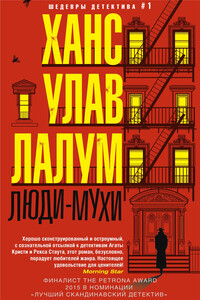
Убит бывший лидер норвежского Сопротивления и бывший член кабинета министров Харальд Олесен. Его тело обнаружено в запертой квартире, следов взлома нет, орудие убийства отсутствует. На звук выстрела к двери Олесена сбежались все соседи, но никого не увидели. Инспектор уголовного розыска Колбьёрн Кристиансен считает, что убийство, скорее всего, совершил кто-то из них. Более того, он полагает, что их показания лживы.
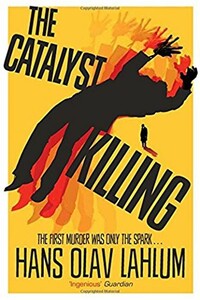
The third mystery in the hugely compelling, bestselling international crime series from Norway's answer to Agatha Christie, Hans Olav Lahlum, The Catalyst Killing will have you guessing to the final clue. The first murder was only the spark… 1970: Inspector Kolbjorn Kristiansen, known as K2, witnesses a young woman desperately trying to board a train only to have the doors close before her face. The next time he sees her, she is dead… As K2 investigates, with the help of his precocious young assistant Patricia, he discovers that the story behind Marie Morgenstierne's murder really began two years ago, when a group of politically active young people set out on a walking tour in the mountains.
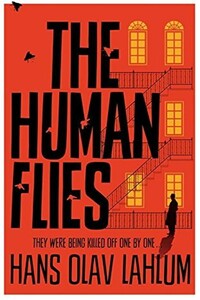
Oslo, 1968: ambitious young detective Inspector Kolbjorn Kristiansen is called to an apartment block, where a man has been found murdered. The victim, Harald Olesen, was a legendary hero of the Resistance during the Nazi occupation, and at first it is difficult to imagine who could have wanted him dead. But as Detective Inspector Kolbjorn Kristiansen (known as K2) begins to investigate, it seems clear that the murderer could only be one of Olesen's fellow tenants in the building. Soon, with the help of Patricia – a brilliant young woman confined to a wheelchair following a terrible accident – K2 will begin to untangle the web of lies surrounding Olesen's neighbors; each of whom, it seems, had their own reasons for wanting Olesen dead.
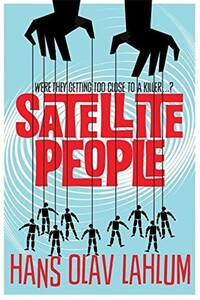
A gripping, evocative, and ingenious mystery which pays homage to Agatha Christie, Satellite People is the second Norwegian mystery in Hans Olav Lahlum's series. Oslo, 1969: When a wealthy man collapses and dies during a dinner party, Norwegian Police Inspector Kolbjorn Kristiansen, known as K2, is left shaken. For the victim, Magdalon Schelderup, a multimillionaire businessman and former resistance fighter, had contacted him only the day before, fearing for his life. It soon becomes clear that every one of Schelderup's 10 dinner guests is a suspect in the case.
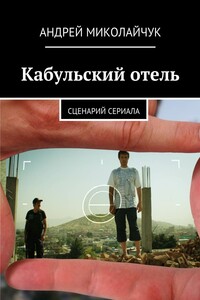
Когда на Youtube появилось прощальное видео Алексея, в котором он объясняется в любви к своей жене на фоне атаки талибов на британскую миссию в Афганистане, никто даже не подозревал о том, что это обыкновенный фотограф, который в попытке не потерять работу принял предложение сделать репортаж о старателях, добывающих изумруд.

Мы — это то, что мы думаем и делаем. Мы в ответе за все свои поступки. Сказка и реальность — две параллели, но иногда граница, разделяющая их, стирается…
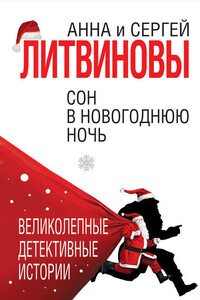
Предновогодние деньки для многих — любимое время в году. Улицы и дома сверкают яркими огнями, все торопятся выбрать оригинальные подарки, а в воздухе витает настроение праздника! Признанные мастера криминального жанра Анна и Сергей Литвиновы тоже приготовили для читателей презент — сборник новогодних остросюжетных рассказов. Напряженные интриги и захватывающие дух повороты сюжета никого не оставят равнодушным, ведь под Новый год может случиться невероятное!
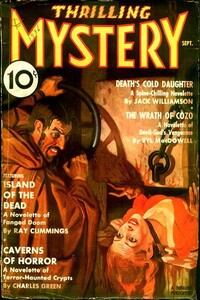
Герой этого рассказа возвращается в дом своего детства и находит своих братьев и сестру одичавшими и полубезумными. Почему они стали такими? Кто в этом виновен?
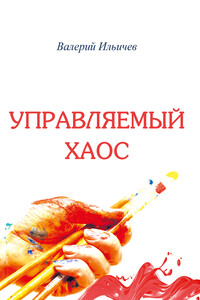
«Елена Мазина уже стояла в дверях, когда мужчина, ставший её очередным любовником, лениво, словно нехотя, спросил: – Мне тебе позвонить? – Нет, лучше я сама дам знать, если захочу тебя вновь увидеть…».

В книге рассказывается история главного героя, который сталкивается с различными проблемами и препятствиями на протяжении всего своего путешествия. По пути он встречает множество второстепенных персонажей, которые играют важные роли в истории. Благодаря опыту главного героя книга исследует такие темы, как любовь, потеря, надежда и стойкость. По мере того, как главный герой преодолевает свои трудности, он усваивает ценные уроки жизни и растет как личность.